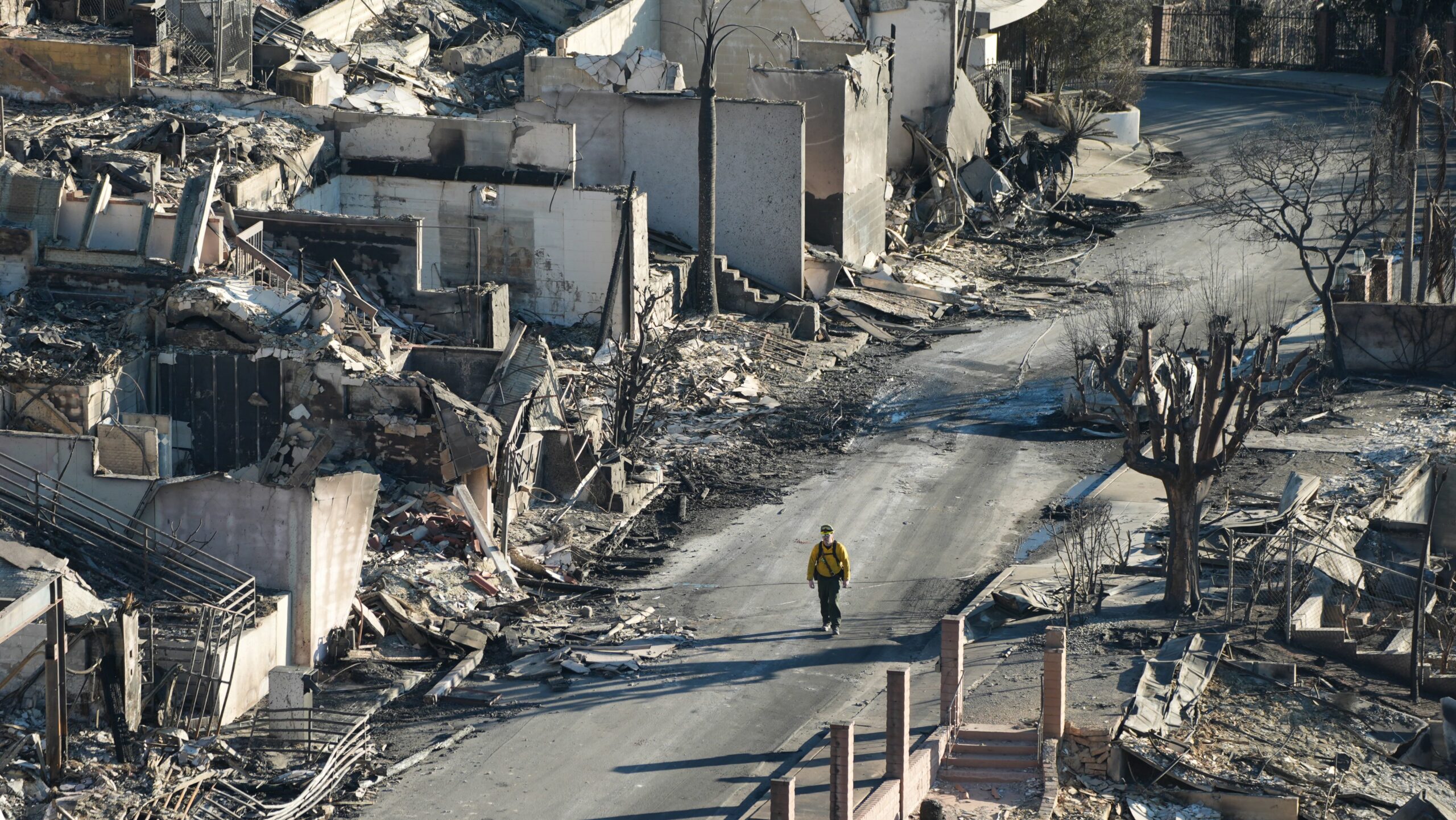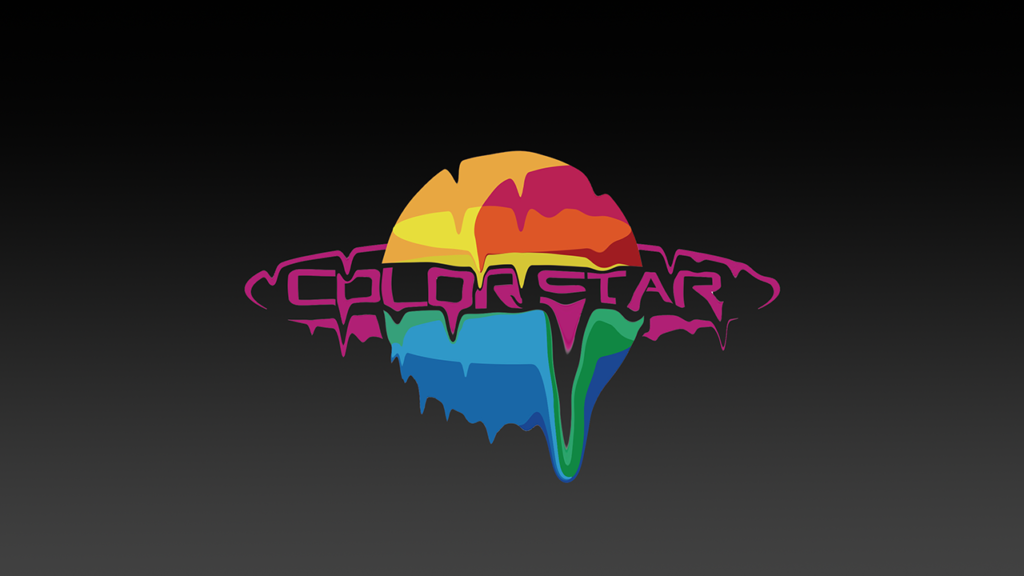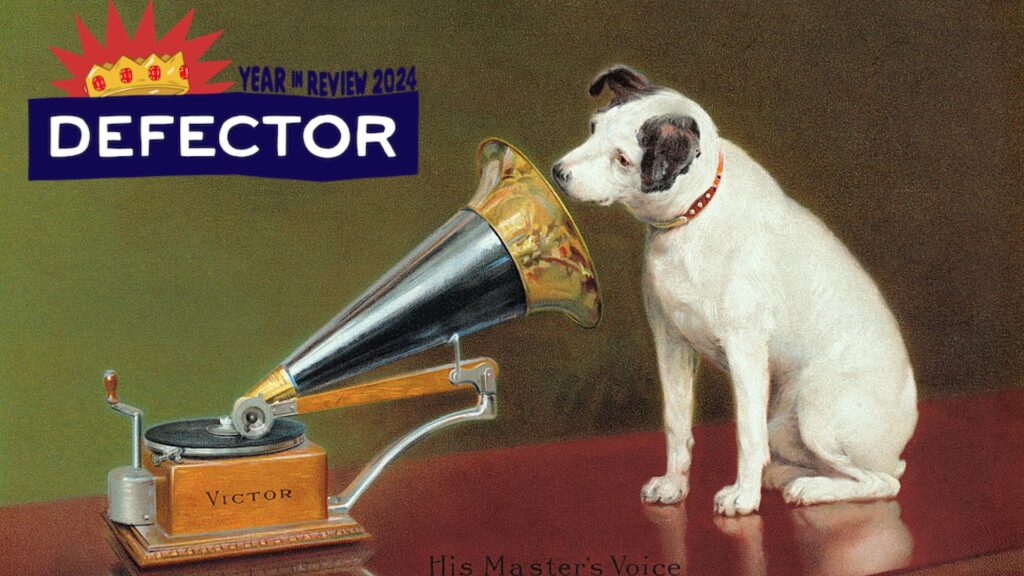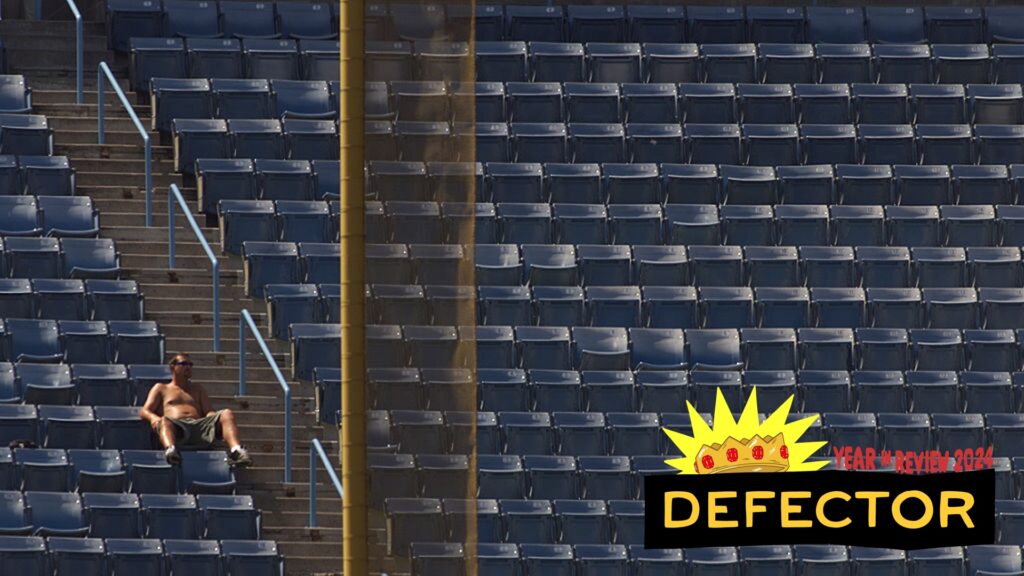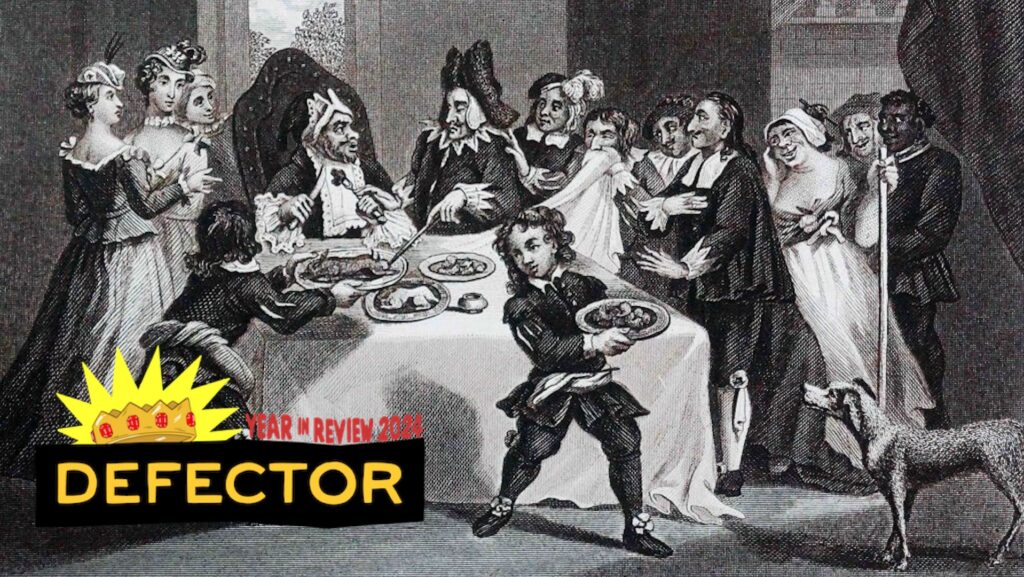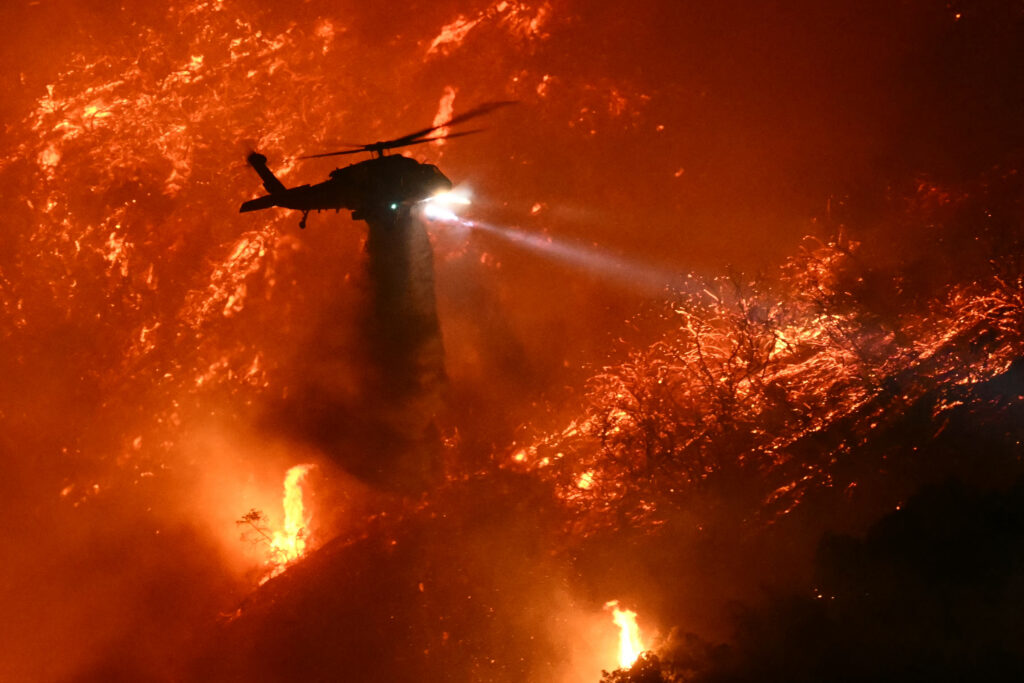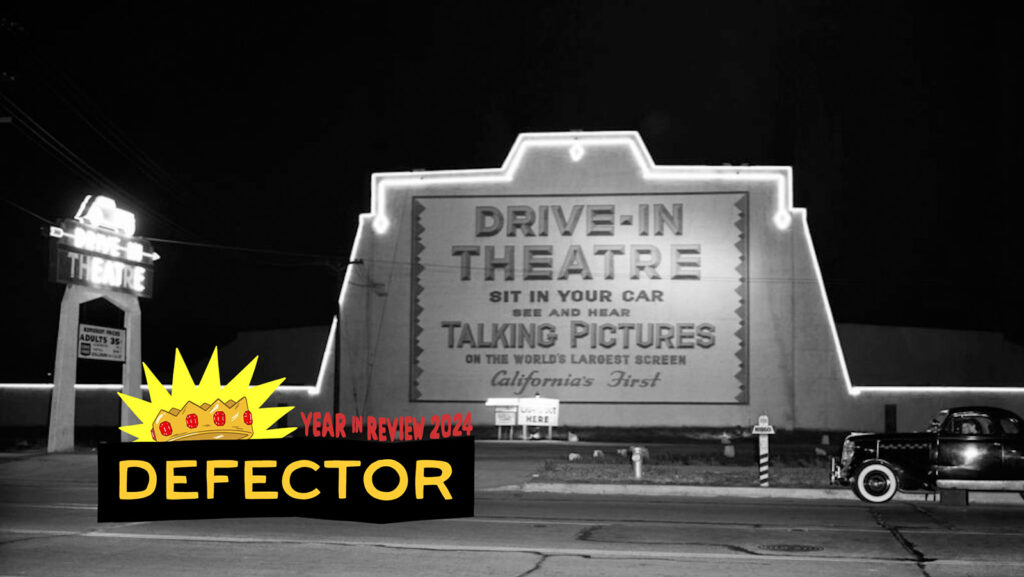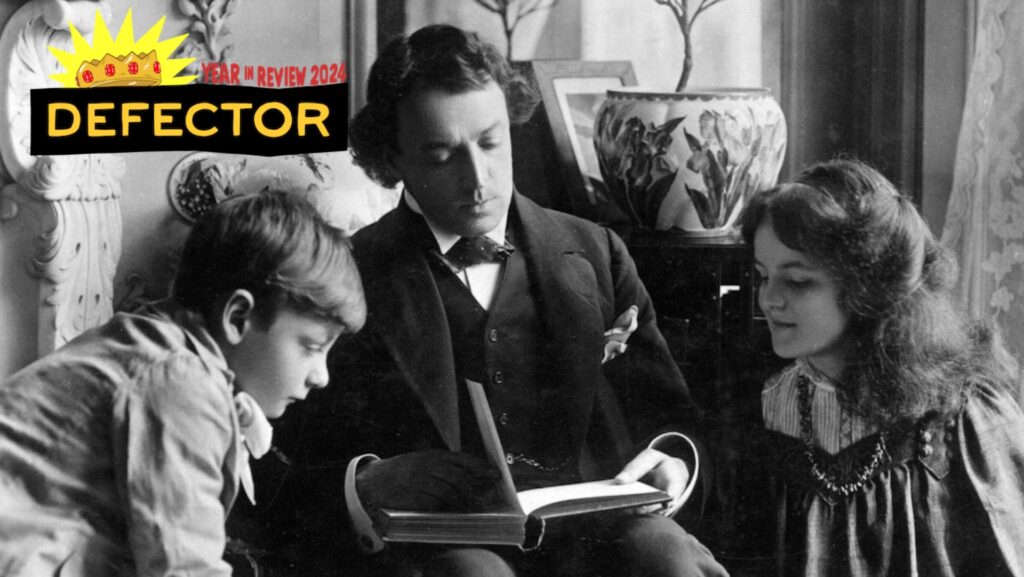During the first week of the fires, I would go up to my building’s roof once a day. I’d look at the Los Angeles skyline at whatever shade of yellow-orange-brown muck the fires had delivered that day and take a photo, and then I’d scurry back inside. Against my better judgment, one time I took my mask off for one second and immediately felt ill. The entire city smelled like a funeral pyre.
Back inside, I would turn on my TV, switch it to a local news station, and leave it on all day. I wouldn’t shut it off until a few hours before bed, when my husband and I would watch some scripted TV to unwind—unless the flames were getting a little too close, which only happened once. Local TV news and its updates became the soundtrack of my days, complete with its bright graphics, specific music, and the parade of weary-but-pulling-through-it anchors tossing to extremely awake but often harried live reporters. It was from local TV where I learned where to donate supplies for those who lost everything in the fires. It was on local TV that I—and many Angelenos—learned about a fire in the Hollywood Hills, later dubbed the Sunset Fire, that sparked up Wednesday night and required immediate evacuations in the heart of Hollywood. And it was on local TV where I first heard the stories of the people who died.
It’s just as telling what I didn’t hear from local TV news. I didn’t hear conspiracy theories blaming the fires on programs to encourage diversity in the workforce. I never heard that the Hollywood sign was on fire (because it never was) or that Gov. Gavin Newsom refused to let water into Southern California for firefighting purposes, which was a lie posted on Truth Social.
When every single phone in Los Angeles screamed an evacuation warning alert, I was skeptical. This was not because I, as a former Floridian plenty familiar with the perils of defying an evacuation order, wanted to tough it out. It was because I’d been watching local news and knew exactly what fire the alert was referring to, and just how far away it was from nearly all of us. Sure enough, minutes later, KTLA clarified on air that officials told them the alert had been sent on accident; it was meant only for the area around the Kenneth Fire, that very far-away-from-me fire I’d been watching spread live on TV.
There’s always been a certain type of American who proved they were better-educated or better-read, or of a better class by insisting they didn’t watch TV or consume local news. Local news isn’t perfect, as demonstrated by the airtime quickly given to the oafish former mayoral candidate Rick Caruso. And the predictable rhythms and tics of local news do make it mockable; those tendencies gave us Anchorman and The Onion. But in times of crisis, local news remains the best and most reliable source of local information. It has the requisite knowledge and experience and the (dwindling but still tangible) resources to cover this story in a way national news does not; quite simply, it is built for this. Local media decisions are still made, at least on occasion, by people using news judgment, and not by an algorithm. For all their human faults, that also means they are considering the needs of their human audience, and not aiming to optimize, or just maximize, the response of your dopamine processors such that you’ll be more likely to re-share another piece of rage bait, or just stick around through the commercials. There is plenty of that in local news, too, but it can still be counted on in an emergency.
Those who have worked in local news know that it is an ecosystem. There are certain stories that are best suited for TV, and stories that are best suited for radio, and stories that are best suited for print and digital. That doesn’t make one better than the other; they all feed each other. I know local TV news will tell me when to evacuate, and I know local radio will keep me informed during the drive if we do need to go; later, local newspapers and digital shops will do their best to figure out what happened with all those promises made under duress by the government.
Except local news has been diminished greatly. Many Americans live in news deserts now, meaning they do not have a single local newspaper covering them. Local TV news hasn’t been hit as hard as newspapers, but survey results from less than a year ago show that nearly two-thirds of news directors agree burnout is a growing problem in the field. The conditions at those workplaces, many of which are now owned by national concerns like Sinclair, makes keeping experienced reporters and producers—the kind you need in a disaster—even harder. Los Angeles is lucky; we still have a newspaper, plus some digital news startups, radio stations, and TV stations. What would happen if we didn’t?
The time for a nationwide governmental effort to save the entire ecosystem of local news—from top of to bottom, from big-city dailies to scrappy alt-weeklies, from the biggest TV stations to the tiniest radio stations, all of which need each other to do what they do—is now. The U.S. is the wealthiest country in the world, but it spends a pittance on public media compared to other countries, many of which also and not coincidentally tend to have stronger democracies. There are many lessons that can be taken away from the LA fires but one, clearly, is that local news saves lives—and we need to save it.
One of the best examples of local news saving lives comes from Paducah, Ky., where WPSD meteorologist Trent Okerson used his expertise to warn residents for days in December of 2021 about the approach of a potentially dangerous storm system. When that forecast became reality, Okerson spent hours on air, along with his entire team, updating people on the EF-4 tornado and how to stay safe. He told people which towns and roads tornado would hit, he told them to seek shelter, he reminded them to evacuate from any mobile homes. One man said he left his mobile home because the TV told him to. His house was gone 20 minutes later.
Why did Okerson do this? He told Al Tompkins at Poynter that, when news director Perry Boxx hired him in 2018, Boxx set him straight on his job duties: “We save lives. We track storms.”

You’ll find similar stories from similar communities. When I was child, Bryan Norcross saved lives staying on air while Hurricane Andrew devastated south Miami-Dade County. Decades later, South Florida meteorologist John Morales went viral for conveying the potential devastating impact of Hurricane Milton. In between, people in Tupelo, Miss., gave credit to one of their local meteorologists—Matt Laubhan—for saving their lives in 2014 from an EF-3 tornado. In every example, the meteorologist had lived in the community for years, or even decades, and had the expertise to understand the threat while also having the necessary local knowledge to convey the message in a way residents would actually heed. It’s a level of nuance we’ll never get from a push notification or a text message on our phones, and something like the opposite of what national cable news does.
And these are just examples from the weather desk, which is just one part of the hydra of local news. Yes, your local meteorologist just saved your life. But what comes next? How will I file an insurance claim? Is the water safe to drink? If not, when can I start drinking it? Where can we get supplies? Where can we find shelter? Where are the aid stations? Who needs volunteers today? Who needs donations? Are schools open? I’ve seen every single one of these questions answered, again and again, by local TV stations here in Los Angeles on a daily basis.
I know that other parts of the ecosystem will step up as needed, and they already are. What actually happened with the water in Pacific Palisades? Read the Los Angeles Times and you will find out. What actually happened with Mexico sending firefighters to help in Los Angeles? LA Taco can explain. Local NPR station KCRW created my favorite list to share of ways to donate or volunteer. One night, a friend told me word on the street was a Southern California Edison transformer explosion in the hills started the Eaton fire. Not even 24 hours later, the LA Times reported that officials appeared to be focusing their investigation on an electrical transmission tower in Eaton Canyon.
I know there are examples of journalists getting it wrong. I know every institution I cite in here, especially those that go back 100 years or more, will have their own sordid histories of racism and sexism, hidden political agendas, and times they simply missed. Local TV news’ obsession with “if it bleeds, it leads” (pioneered by South Florida’s WSVN, one of the local stations where I grew up) has been found by researchers to encourage viewers to then increasingly associating people who are black with crime. The Los Angeles Times only endorsed Republican candidates for president for nine decades and publicly apologized just a few years ago for an eight-decade history of being an “institution deeply rooted in white supremacy and committed to promoting the interests of the city’s industrialists and landowners.”
But what matters, when it matters most, is that these are institutions staffed by people who hold themselves to a real standard and are willing to accept accountability when they err; their credibility in the communities they serve depends upon this. That is fundamentally what makes journalism journalism, and not propaganda or gossip or plain swill. True journalists strive for what is correct. For their many, many faults, journalistic institutions have changed and they will continue to do so—if they survive.
In the U.S., 206 counties are defined as news deserts, meaning they have no local news source, per the Northwestern local news initiative; another 1,561 had just one news source. The report estimated that the current number of people in the U.S. with either limited or no local news is almost 55 million. This is slack that the country’s approximately 800 regional TV stations can’t pick up because, as the same initiative said in 2023, “numerous research studies have concluded that more than 90 percent of the news stories that air are about events, issues, and people in the city where the station is located.” Yes, TV can send reporters into those communities to cover news but, again, news is an ecosystem. When one piece of it dies, the whole machine works less well as a result.
As annoying as it is to run into a highfalutin editor who thinks they are the sole keeper of what is or is not news, well, at least they have a concept of news. Algorithms can’t make the same claim.
Local news is powered by eyeballs on stories, and so is social media. In the days following the firestorm, word of on-the-ground volunteering and donating spread through social media far faster than it could have before. Angelenos were desperate for ways to help, and social media helped get requests out for people to connect with organizers and those in need. Donation drives went viral. Black families displaced by the Eaton fire had all their GoFundMe pages collected in one spreadsheet. A massive donation collection and distribution hub sprang up at the Rose Bowl, then moved to Santa Anita Park, all through people connecting on TikTok. The Santa Anita setup grew so large that local TV stations showed up to report on it. That’s how I heard about it; my husband and I emptied out a good chunk of our pantry and drove it over.

But those moments of human connection—which were, once, the thing that Silicon Valley promised us in return for all that personal data—were easy to miss in the wide roiling sea of social media garbage. Locally, I was awash in stories of people organizing their own donation drives, aid groups getting overloaded with items, and firefighters getting standing ovations. But the moment I talked to anyone outside of Los Angeles, I found that the same algorithm that gave me the tribal connection I needed to find helpers had given them what their tribal connection demanded—everything from half-truths to flat-out lies, and somehow always perfectly tailored to their political persuasion.
Take, for example, a bit of video ripped from a KTLA broadcast. It came from a live TV report about neighbors helping neighbors in the historically black community of Altadena remove belongings from a home in case the Eaton fire reached there. As in so many last-minute evacuations, they used trash bags. Images from this report soon whipped around around Threads as proof of “looting” in Los Angeles; on Twitter, users skipped even that and used that site’s AI to generate images of looters that reality hadn’t provided. Content was shared from all sides, to advance an agenda or just to fill a void. The joyful video of South African firefighters coming to help Los Angeles was taken from Canada in 2023. Ditto for video of Mexican firefighters; they really did come, but an old video from a previous time Mexico sent firefighters to help with wildfires tore around social media regardless.
Yes, people from news organizations fact-checked these, eventually. But the aphorism that “a lie is halfway round the world before the truth has got its boots on” remains true—and social media has turbo-charged that timeline. The lies whip around faster now; what before was “word on the street” or “I heard from a guy” has been transformed into graphics and video that can look a lot like news. Anyone can whip up a graphic or make a mock headline or rip video off live TV and re-edit it to suit their needs. Social media algorithms will reward this, because algorithmic priorities are fundamentally at odds with the principles and ethics that modern newsrooms developed. If the latter exists to inform, the former seeks only to engage, or enrage. Accuracy is not really a part of that equation.
You can’t call up an algorithm and yell, which is a thing that happens in local newsrooms all the time. You can’t cancel your subscription to an algorithm when it betrays your trust; at best, you can leave the platform, but at this point the surviving social media platforms seem to have a bizarre, Standard Oil-like monopoly on our eyeballs. You can call out inaccuracies in the comments and replies, but for every account that will accept responsibility for spreading incorrect info, there are seemingly 10 that will post through it, or even be emboldened by it. It was a journalist who helped bring down Standard Oil, after all, a piece of history that is probably not lost on Mark Zuckerberg and Elon Musk. Zuckerberg recently stopped Facebook’s work with fact-checking organizations, and Musk—do we even really have to tell you what he’s up to at this point?
The nonprofit organization Free Press published a paper in 2009 calling for a national journalism strategy. The paper is nearly 15 years old, but reads distressingly like a description of our current moment. It begins by noting that the U.S. “could soon embark on an unprecedented social experiment by becoming the first advanced democracy to leave wide sections of society and entire geographic regions without a fully functional, professional press. We are venturing into uncharted territory.” Millions of Americans now live there.
I worked in local news for approximately a decade to start my career, and a big part of that job was people yelling at me. Sometimes they were justified. But nobody ever told me they wanted my employer to go under; they wouldn’t have bothered yelling if they did. They just wanted the newspaper to be better.
You do not need a PhD to understand that every community is better served when it has at least one local newspaper publishing every day of the year and, at the very least, local TV and radio close enough to get there in case of an emergency. Those emergencies happen, and they will happen with increasing frequency. At some point, it will become impossible to know what emergencies could have been avoided if just a single reporter had been around to suggest, “hey, that seems like a bad idea” or to say, “the weather looks dangerous, please prepare for that” because the entire concept of a reporter being around will be gone. Our best hope, then, will be that someone beautiful enough or cool enough or famous enough will make a post saying, “evacuate now” and that the algorithm will make it viral in time. I’d rather rely on my local city hall reporter and my local meteorologist, personally.
Social media promised us that, with a supercomputer in our pockets, we could all be reporters; Musk has taken to exulting “you are the media now.” Who needs professionals when you’ve got a professional-grade video recorder in your pocket! It is true that some people have found success writing their own newsletters or running their own social media accounts; but these should be supplements, and cannot be replacements. What the gurus of Silicon Valley could never understand, because they never worked in local newsrooms, was the importance of the entire architecture of a news gathering organization, from the layers of editors to the copydesk to the photographers to the graphic designers to the clerks. It was so much more than fact checking. The bylines, or in the case of TV, the reporter you see in that live shot, were and are a bit like auteur theory for journalism, a name standing in the place for the work of many. A creative village makes a movie, and journalism is produced the same way—through the collaboration and care of people at every step of the process, making sure that the story is as correct as it can be.
But who will pay for that village? Living through the LA fires and seeing the critical importance of local news reminded me of how essential this work is at this scale. The national and international news outlets will shift their focus elsewhere—they always do, off to the next election or crisis or scandal—and only local news will be left to see if anyone got their Federal Emergency Management Agency checks, or if politicians kept their promises, or if the fire department budget changed. Local journalism, the LA fires have made clear, is a public good, just like our libraries (now being used to supply free masks here in LA) and our drinking water (swaths of Los Angeles remain under do-not-use or do-not-drink orders) and our roadways (which were key to getting people out and firefighters in). And yet we leave it hanging by a thread—not unlike our libraries and drinking water and roadways, actually.
This can’t continue. We must stop viewing journalism as an outgrowth of the marketplace and more as a key piece of our democracy. As the Free Press paper said in back in 2009, “Neither the market nor technology alone will save journalism.” People will have to do that, and not just as consumers.
We will not subscribe our way out of this dire crisis of our democracy. It is too big and too important. I can reliably turn on my electricity, every day, due to government policies and standards and funding; the same guarantees could and should make it possible for me to reliably get my local news, every day. This isn’t happening, and the extent to which that work has been abandoned is shocking when compared to other democracies. Research by Timothy Neff, a lecturer at the University of Leicester, and Victor Pickard, a professor of media policy and political economy at the University of Pennsylvania, published in 2021, found that the United States spent $3.16 per person on public media. To the north, Canada spent $26.51. Across the Atlantic, France spent $75.89, Germany spent $142.42, and the United Kingdom spent $81.30. On the other side of the Pacific, Japan spent $53.15 and Korea spent $14.93. Keep going and its the same pattern; Australia spent $35.78, and New Zealand did $26.86. As Joshua Benton put it in 2022 when writing for Nieman Lab about those numbers, “It’s like the rest of the world is playing high-level soccer and we’re off in a corner, doodling with a ketchup bottle.”
Deep investment in public media is just one way to do this; there are also indirect ways the government can support the press. The numbers are old, from 2008, but a report from the Reuters Institute for the Study of Journalism again shows that other countries find their own ways to support the press; the U.S., under direct press subsidies, is listed as having “none.”
The evidence of this investment is plain to see for any American who goes overseas; the first thing I always notice abroad is that not only are there more public television stations, but there are more newspapers, and they are easier to find than anywhere here in the U.S. Here in Los Angeles, newspapers racks are disappearing. They are in your town, too.
This is why an argument about whether the U.S. media’s is covering climate change enough devolves into the proverbial snake eating its tail—what media? Between 2008 and 2020, the U.S. lost an estimated 30,000 reporting jobs. The declines have continued since. The journalists who are left, outside of a very short list of national publications and broadcasters, now struggle to juggle two, three, or four beats. The dirty secret of news always has been that most national broadcasters and publications get their “tips” from reading local news and jumping in. This means that less local news means less news, at least of substance, for everyone. Yelling online that U.S. reporters aren’t doing enough on climate change without talking about restoring reporting jobs is about as effective as yelling at a wildfire that it is being irresponsible and rude.
The call for more state funding can feel like wishful thinking, especially given that the incoming administration wants nothing more than even less journalism; it is a movement built around and to some extent upon the deranging and unreliable media apparatus that has replaced a functional news ecosystem. The country’s longstanding history of paranoia and antagonism toward robust government doesn’t help, either. But, as every journalist knows, the facts are the facts. If the U.S. does not support a robust and healthy local ecosystem, there will be even fewer journalists to provide key information in the next community hit by disaster. When the next wildfire comes, will I still have the LA Times, or will I be stuck looking out at a burning skyline from my roof and wondering what is happening out there? Will I have KTLA? KCAL? KABC? We need to make sure the answer is yes.

 Workout
Workout
 Meditation
Meditation




 Contact Us
Contact Us
